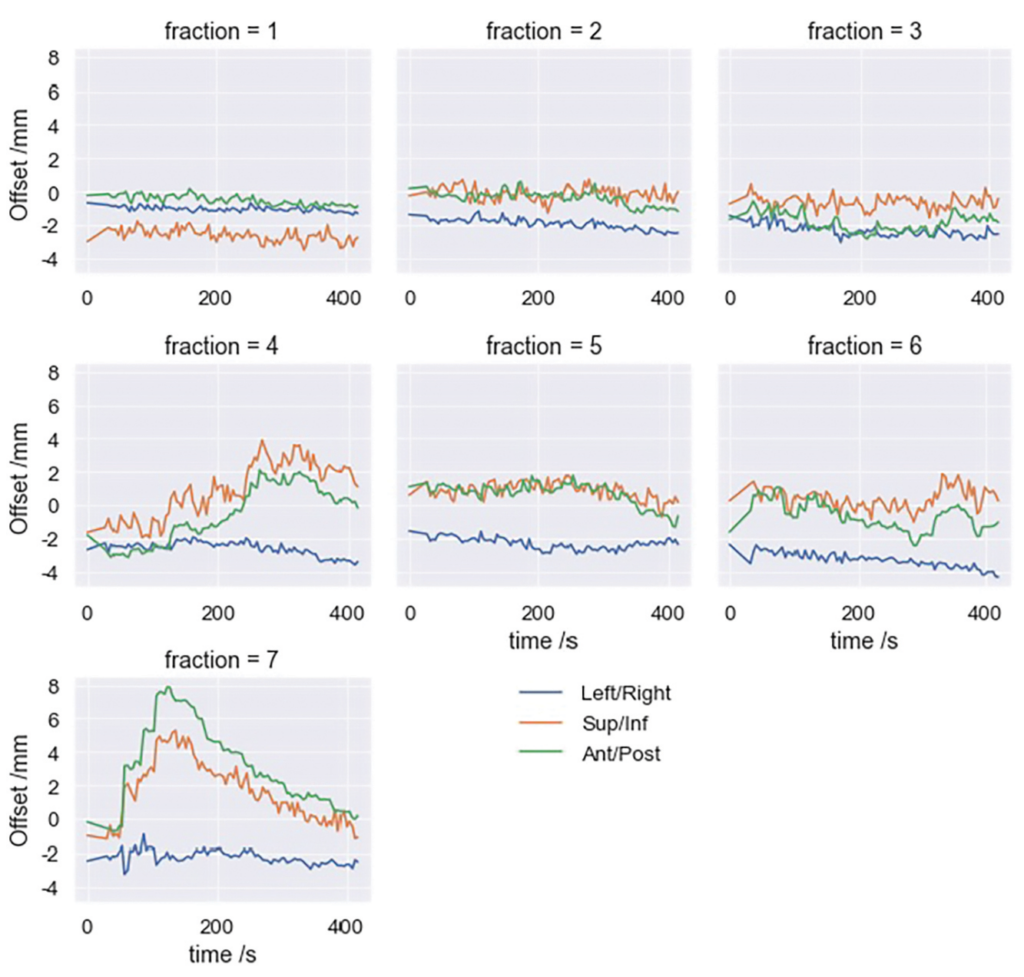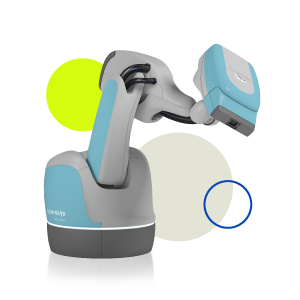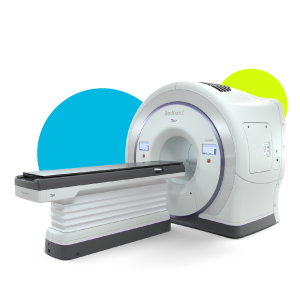CASE STUDY | SKÅNE UNIVERSITY HOSPITAL, LUND, SWEDEN
Clinical Application of Synchrony® Fiducial Tracking in Ultra-Hypofractionated Prostate Radiotherapy
At our center we have introduced real-time MLC-tracking for ultra-hypofractionated
prostate radiotherapy. This approach mitigates uncertainties arising from prostate
motion and utilizes an MRI-based synthetic CT workflow. Here we present a case study
centred on a patient with prostate cancer receiving hypofractionated treatment using
Synchrony® Fiducial Tracking™, a real-time target tracking technology using MLC and
jaw motion to correct for target motion. A synthetic CT was used as a reference for
dose planning, fiducial recognition and image registration.
“We believe that the future of prostate radiotherapy such
as ultra-hypofractionated radiation therapy and stereotactic
body radiation therapy (SBRT) requires mitigation of motion
uncertainties and that real-time tracking is an attractive option.”
Case Challenge
Ensuring accurate synthetic CT matching with daily kVCT and precise
MLC and jaw tracking for ultra-hypofractionated prostate radiotherapy.
Offset from registered position

Figure 1: Offset from reference position for each fraction and axis. Axis in machine coordinate system, sup/inf meaning superior/inferior, where superior in the head direction and thus into the bore, ant/post meaning anterior/posterior positive is in the anterior direction. Offset was calculated by Synchrony® from kV images with 6 kV images per gantry rotation, and a rotation time of 24s.
Facts at-a-glance

FACILITY NAME
Skåne University Hospital
LOCATION
Lund, Sweden
ABOUT
Clinical implementation of Synchrony®
Fiducial Tracking™, real-time tracking
with MLC and Jaw correction in ultrahypofractionated
prostate cancer patients
TREATMENT SYSTEM EXPERIENCE
In 2008 the TomoTherapy® System was
introduced. In 2021 the Centre upgraded
to a Radixact® System and started using
Synchrony real-time tracking in 2022
UPGRADE TECHNOLOGY SOLUTIONS
Synchrony, ClearRT® kVCT imaging
INDICATION
Prostate cancer

Treatment Rationale
With the goal of minimizing uncertainties from prostate motion during ultra-hypofractionated prostate radiotherapy, we employed online real-time MLC-tracking. The synthetic CT, derived from deep learning-assisted MRI sequences, served as a reference for dose planning, fiducial recognition, and image registration. This approach eliminates the need for a dose planning CT. The synthetic fiducials’ position and the synthetic CT’s correlation to the daily CT were crucial aspects for successful implementation. The patient was a pioneer in our forthcoming trial Real-time Motion Management During Prostate and Lung Radiotherapy (REMIND). The patient was prescribed 42.7Gy in 7 fractions with a CTV-PTV margin of 7mm.
Outcomes / Conclusions
The synthetic CT generation method proved effective with minor deviations in dose calculations. The first patient’s median and range 3D deviations from the reference position across seven fractions varied but confirmed the importance of MLC-tracking for precise corrections, see Figure 1. The daily CT matched the synthetic CT well, see Figure 2, validating the feasibility of fiducial tracking based on synthetic CT generated using deep learning. The patient tolerated the treatment well. This case demonstrates the potential of the technique in reducing uncertainties during treatment.
Important Safety Information
Most side effects of radiotherapy, including radiotherapy delivered with Accuray systems, are mild and temporary, often involving fatigue, nausea, and skin irritation. Side effects can be severe, however, leading to pain, alterations in normal body functions (for example, urinary or salivary function), deterioration of quality of life, permanent injury, and even death. Side effects can occur during or shortly after radiation treatment or in the months and years following radiation. The nature and severity of side effects depend on many factors, including the size and location of the treated tumor, the treatment technique (for example, the radiation dose), and the patient’s general medical condition, to name a few. For more details about the side effects of your radiation therapy, and to see if treatment with an Accuray product is right for you, ask your doctor. Accuray Incorporated as a medical device manufacturer cannot and does not recommend specific treatment approaches. Individual results may vary.
Most side effects of radiotherapy, including radiotherapy delivered with Accuray systems, are mild and temporary, often involving fatigue, nausea, and skin irritation. Side effects can be severe, however, leading to pain, alterations in normal body functions (for example, urinary or salivary function), deterioration of quality of life, permanent injury, and even death. Side effects can occur during or shortly after radiation treatment or in the months and years following radiation. The nature and severity of side effects depend on many factors, including the size and location of the treated tumor, the treatment technique (for example, the radiation dose), and the patient’s general medical condition, to name a few. For more details about the side effects of your radiation therapy, and to see if treatment with an Accuray product is right for you, ask your doctor. Accuray Incorporated as a medical device manufacturer cannot and does not recommend specific treatment approaches. Individual results may vary.
© 2023 Accuray Incorporated. All Rights Reserved. Accuray, the Accuray logo, and other trademarks are trademarks or registered trademarks of Accuray Incorporated and may not be used without permission. For more information on Accuray and its trademarks, please visit www.accuray.com/trademarks. MKT004413





